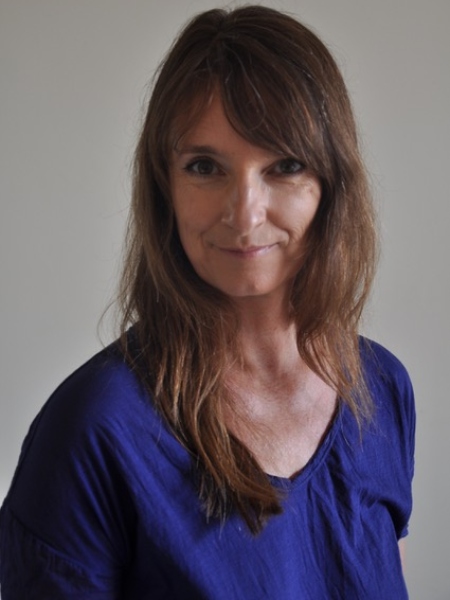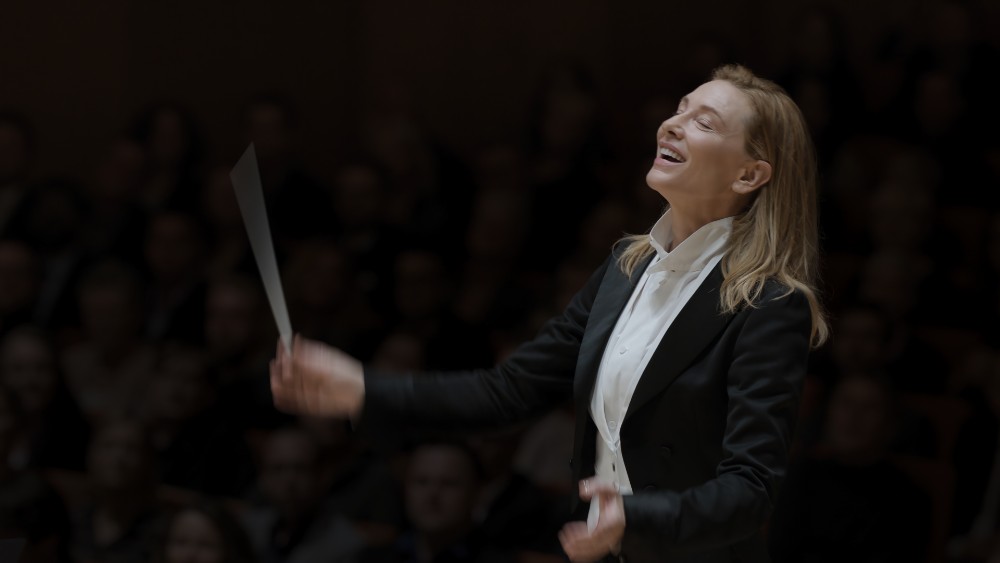Earlier today, Todd Field‘s drama TÁR was named Best Picture by the New York Film Critics Circle, which also gave Cate Blanchett its Best Actress award on the strength of her latest acting clinic. She completely embodies Lydia Tár, a complex but inherently dislikable though still successful woman whose ambitions have driven her to become a world-class conductor — though she doesn’t reach the top without stepping on and over a number of individuals along the way.
The thoughtful script, punctuated on the screen by Blanchett’s brilliant performance, bravely tackles modern-day cancel culture and its implications for those who do not necessarily expect to be at the receiving end of its fury. When we reviewed the film out of Telluride in September, we noted that, but for its meandering final reel, TÁR is, essentially, a pitch-perfect movie.
But Blanchett and Field did not achieve perfection alone, and TÁR’s many below-the-line successes include the costumes crafted by German designer Bina Daigler, who was asked to dress up a modern, cosmopolitan, confident, successful, and determined middle-aged woman who doesn’t just inhabit the music world, she sometimes overshadows it. Daigler also had to dress up Tár’s wife (Nina Hoss) and all the men around her — particularly musicians — as well as a handful of colorful characters who appear in the last few minutes of the movie.
Daigler is an industry veteran who landed her first Oscar nomination two years ago for her work on Disney’s Mulan. Of course, modern garb is typically ignored at the Oscars, but her work in TÁR is just as deserving of a nomination, if not more so.
TÁR was released in U.S. theaters back on Oct. 28 and it was around that time that Below the Line spoke to Daigler about creating the costumes for Field’s meticulous movie, as well as the wonders of working with a two-time Oscar winner such as Blanchett.

Below the Line: How did you get involved with TÁR and once you knew what it was about, what were your initial thoughts in terms of designs for this movie?
Bina Daigler: I got this script quite early, actually. I was working with Cate and she thought I would be a good person because I am German, and [since] she would be working there, she thought I would be a good fit for her. It was a nice little process to know the script from early on. So I started to dig in and do research, identical to how I would do a period project. There are so many elements in this movie, and the script has such [a] high definition about music, about what is happening in New York.
So I did some mood boards based on my own impressions of Lydia Tár. It was a lot of images in the form of paintings and graffiti — things that had inspired me during my script reading. After the boards, I went to Todd and showed them to him and he liked them. We were on the same level in terms of my creative vision.
BTL: A lot of the movie takes place when Tár is either at work or conducting on stage in front of an orchestra. Tell me about your designs for those professional scenes.
Daigler: I did a lot of research on female conductors, and then a lot on male ones. I think Lydia Tár is a very complex character. She has a huge personality that spans both genders. I got my inspirations both from female and male personalities that I found in my research. I realized she was somebody [who] got her clothes from very high-[end] fashion shops, but at the same time, she did not care because her social background was very low. [In] the end, what she cares about the most is the music and her inspiration and her creative work.
So, she has all these nice clothes, but she puts them together very rough, and they have to be comfortable. They have to give her power, too. So, a lot of clothes were made and tailored for Cate’s measurements. Including her jeans, which she called her “power jeans” because they had a very high-cut waist that she had to put on for support when she was conducting. You need to be very centered in your base and in your body when you are conducting. You also need to move very well with [your] arms, so all of [those] were things I tried to put into her wardrobe.
Basically, I wanted this mix between power, sensitivity, and male taste, all contrasted with the other side — that she gets dressed very fast, goes out without makeup, and always is very busy.
BTL: What kind of costumes did you decide for Tár’s wife, played by Nina Hoss, and why?
Daigler: Well, we had a lot of clothes for her. In contemporary movies, there are so many things happening during the shoot and during the rehearsal that I have to give enough options that we can change. Sharon, the wife, was really a character that changed once we started to shoot. It’s actually easy to think she is a victim, but she is not. She is a very powerful woman and she knows where she stands. To be the first violinist, in German music, is a lot, and [it] takes a lot to get there.
I learned a lot of that during the rehearsal, so I had to pivot to designer clothes for her. During the shoot, I realized I did not like some of the dresses. I wanted her to be much more straightforward.

BTL: I get your point that you are presenting the same idea about Tár whether she’s at work or not. But is there another facet at all to her personality that you are trying to convey through her clothing?
Daigler: For sure, she’s more casual at home. So it’s softer, more wool, more comfortable, at least compared to when she is going to the philharmonic. The two women dress up as professionals, and then at home, she is more comfortable.
Also, Tár changes in costumes, in [tune with her] story arc. [During] her time in New York, she has lighter colors, not as rich. It’s still put together, but not as rich, [or as] strong and tough as before. So there are definitely facets to her told through the clothes.
BTL: What are some of the materials you used for them?
Daigler: Nina was more in cotton. Cate was more in silk. To show her stiffer. But then, when she has to start a new life, it is much more in cotton and linen. Then, when she is in Bangkok, everything is off. No more designer clothes, nothing fitted, no suits. It’s just more relaxed and casual because she really has to downsize her personality, and therefore, her life and clothes. I had to express in her wardrobe that she was trying to rethink everything.
BTL: Is there another character that was particularly fun to design the wardrobe for, and if so, why?
Daigler: It was fun to dress the young Russian cellist, Olga, played by Sophie Kauer. She is young and not an actress, [so] this was her first acting work. I had to talk to her a lot about her character, Olga, who was similar to her (Kauer is also a musician), but very different. So we changed Sophie’s hair, and she was beautiful. She learned what it means to be an actress, to adapt your look.
And there is a character that you nearly don’t see in the movie, but for me, was very beautiful to do, [and that] was Krista, the young conductor, who appears very little. It was just one set of clothes, [but] there [were] some nice Fellini skirts and a beautiful jacket that I really liked. I don’t mind that not all of it was in the movie — it was cool to design clothes for one mysterious character you barely see.

BTL: How do you go about collaborating with Cate, who is so beautiful and tall and striking-looking? How do the two of you make sure it all fits together — literally and figuratively.
Daigler: From working with her before, I know how she functions and what she needs. And she knows what I can deliver. We have the same language and rhythm. An assistant said it looks like we are dancing with each other when we are in a fitting. We don’t do things chronologically or in order, we follow our guts and minds. We think in the same creative language and we are good at adapting to each other, which is a huge advantage.
It is interesting — there is a lot of talk of tempo in this movie. The tempo of the movie, the tempo of how Tár walks, the tempo of the other characters. And Todd Field had his own tempo. And sometimes, in the morning, when I went from one to the other, I knew I had to adapt to their tempo. With Todd, I needed more time to answer, [and] with Cate, I had to be nimble. And I thought it was interesting, as we all talked a lot about how tempo was so important to our film and our filming.
BTL: Well, what is the tempo of this movie as you’d define it?
Daigler: I think there are moments when Cate walks that show it — it’s like a chronometer. It’s like tock, tock, tock, or tock… tock… Each music piece has its own tempo, each stanza. So sometimes there is a lot of energy, sometimes it’s quiet. I don’t think there is one tempo — there are many, but it is a key part of the film.
BTL: Thanks again for taking the time to chat today, Bina. Is there anything else you wanted to talk about that I didn’t get a chance to ask you about?
Daigler: I’d really, really like to say “thank you” for wanting to talk to me about contemporary costume design. It gets very little attention but it’s a lot of intricate work. Not every skirt is the same, not every shirt is the same. I’m so happy to talk about TÁR and the costumes. There are so many of us in this field and we work so hard to get it right. You have to get a T-shirt right. I really appreciate everyone who asks me questions about the costumes in this film or supports the [thought and] ideas [that] we put into these costumes. We really thought about everything from the pant size [and] the color [to] the wearing of socks [and] the kind of shoes she wears, [so] I really appreciate that.
TÁR is still playing in select U.S. theaters, and it’s also now available to buy or rent on VOD.





